There are routine sewing machine repairs (COA’s) where nothing is wrong. There are sewing machine repairs where many things are wrong, but the work is still routine because it consists of common problems we have seen many times before and will see many times again. Then there is a third kind, the type of repair that happens once in decade at most, or is novel altogether. This third kind of repair is strange, uncanny, alien. It is inherently confusing and mysterious, both frustrating and fascinating. We encountered one recently, only a few weeks ago. . . .
My dad was servicing an old Juki LU-563 industrial walking foot machine that had all sorts of problems, the main problem being that it wouldn’t make a stitch. He hadn’t worked on this specific model of Juki in months, but he’s seen it enough in his 30+ years fixing machines that it is something he is reasonably familiar with. However, after analyzing this particular machine and making the necessary adjustments, it still wasn’t stitching right. He spent a few more hours trying to get it to work before setting it aside. His oldest brother, my Uncle Marty, is more familiar with this model of machine, and even though Marty is now retired, he visits The Sewing Machine Shop every few months to help us out on certain repair jobs. Fortunately, Marty was planning on coming down to the shop in a couple more weeks, so this Juki LU-563 was put to the side until Marty made his visit.
Marty sat down in front of the Juki and took a close look at all the internal components and critical settings.
“Something doesn’t look right,” Marty said
“What do you mean?”
“It looks like a [Juki LU-] 563, but something is off. The insides of this machine are just not how I remember it.”
As luck would have it, we had just taken in another Juki LU-563 for service. We put the two machines side-by-side on the work bench to compare, and it didn’t take long for my dad and uncle to determine that one of the machines was a fake.
Running into a phony machine isn’t unheard of at our shop— I’d say about once every couple of years we take in a Chinese knockoff masquerading as a Singer 201. There are some companies that make replicas of Juki industrial machines, but they don’t attempt to dupe potential buyers by dishonestly using the Juki nameplate or copy the exact paint job.
So, how could my dad and uncle tell which one was the fake?
Let’s take a closer look at side-by-side comparisons of individual components, then do some analysis at the end:
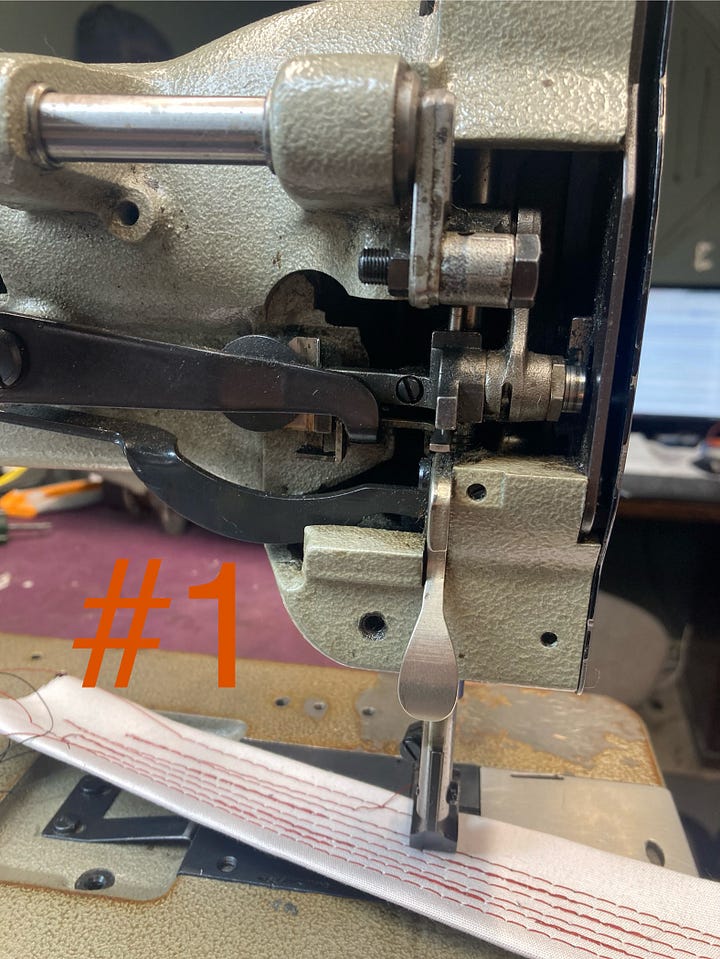
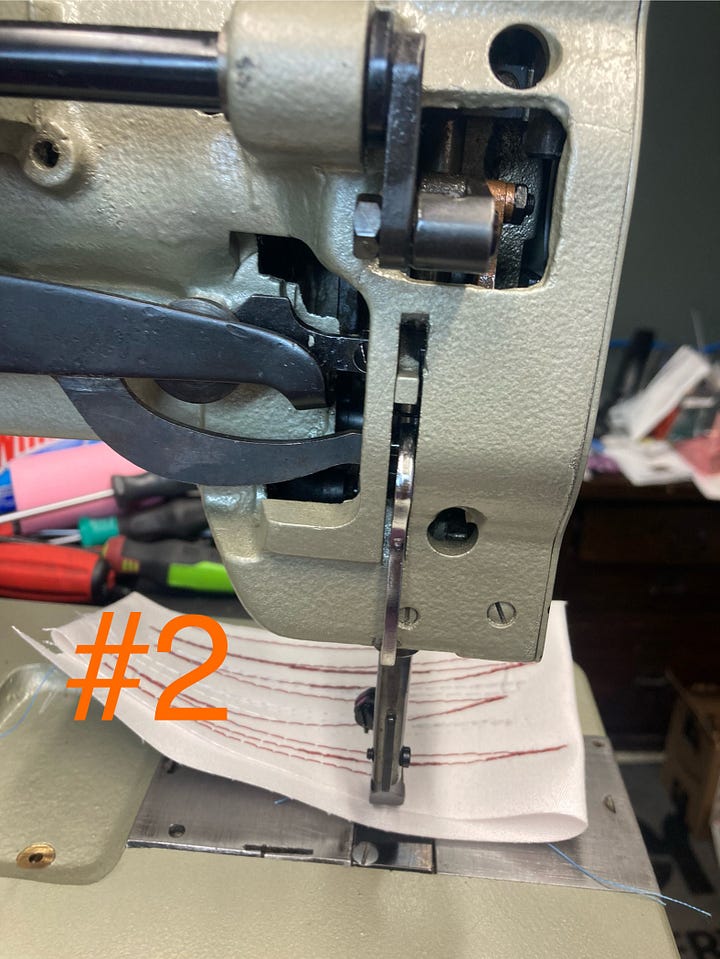
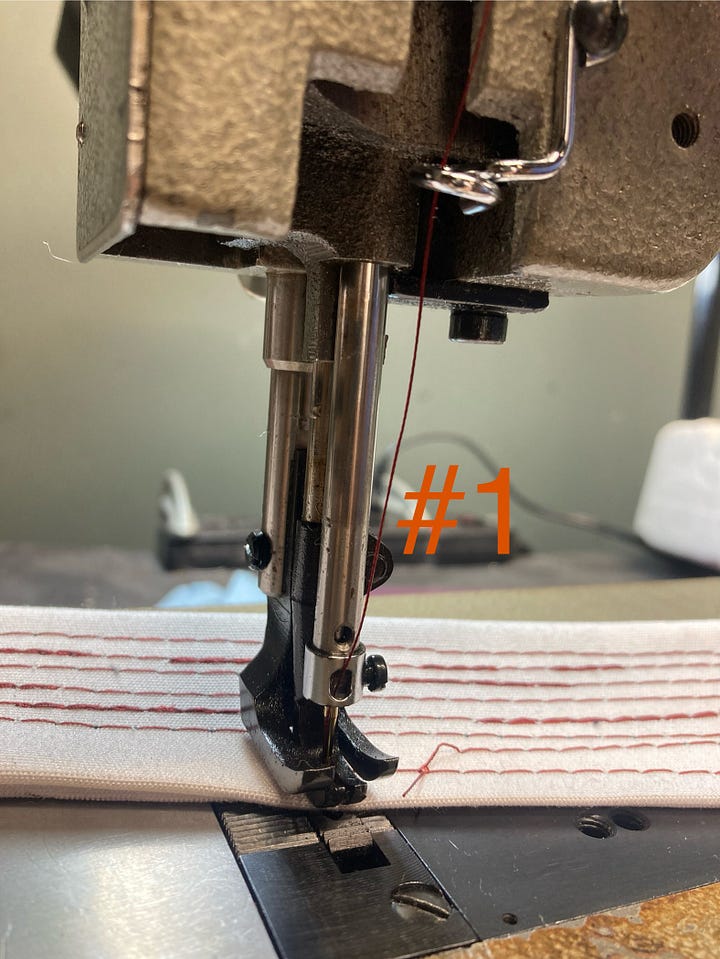
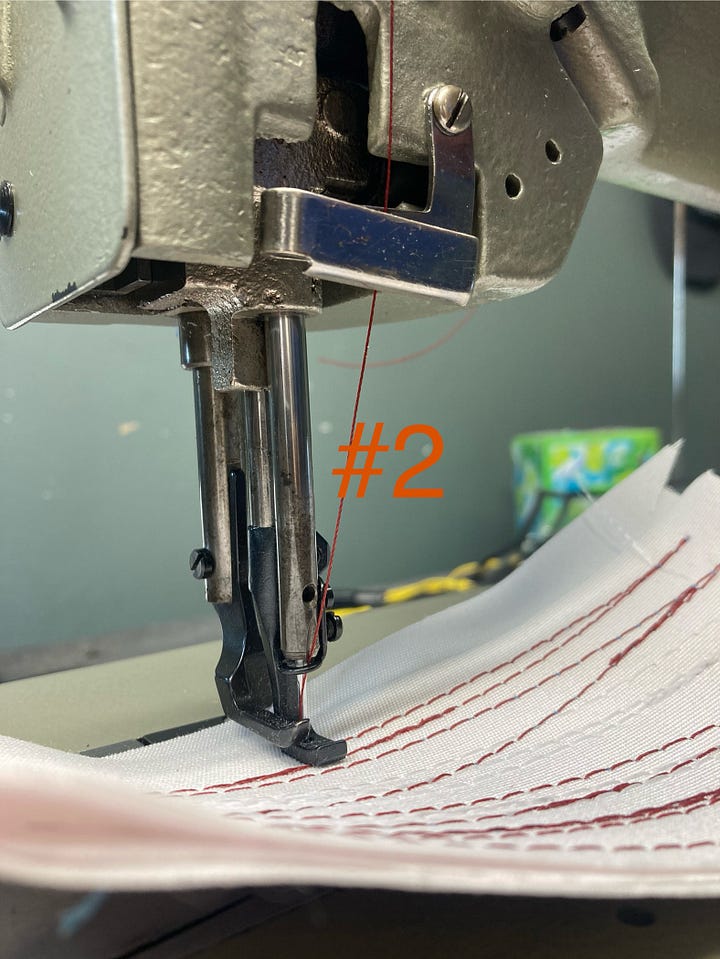
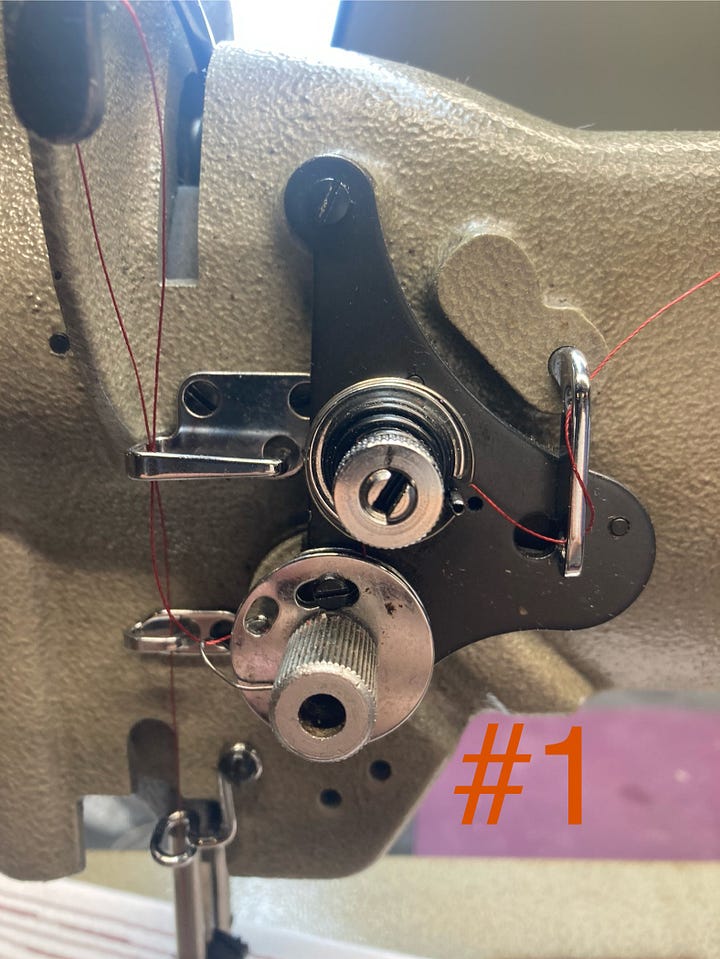
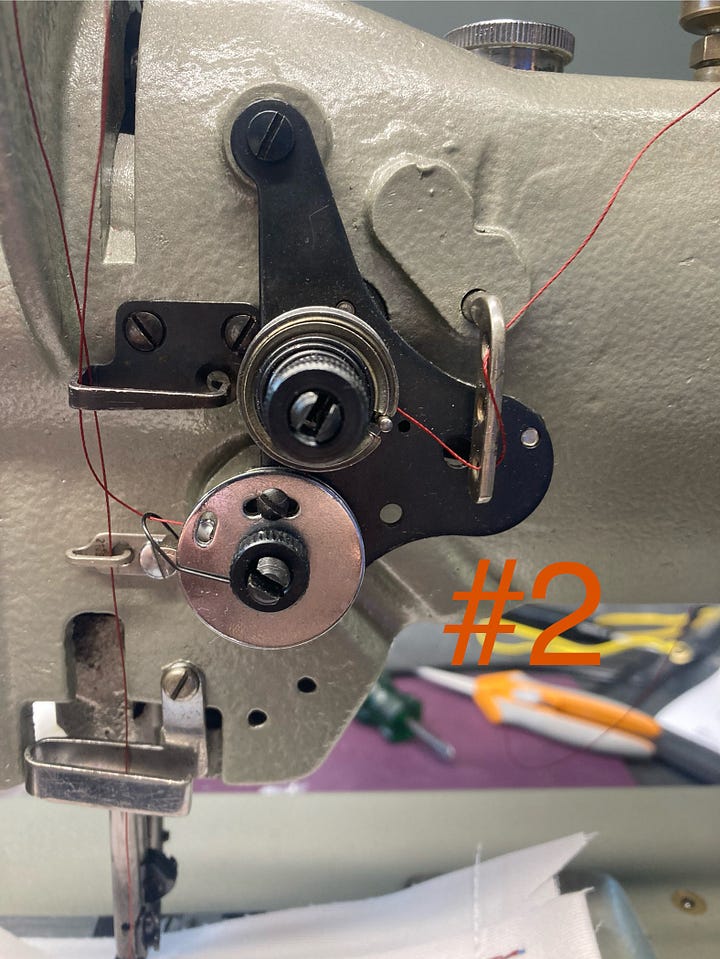
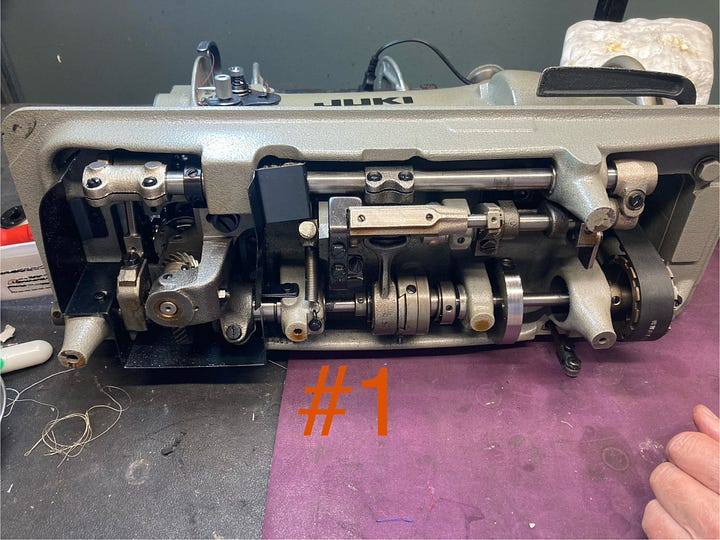

Keep reading with a 7-day free trial
Subscribe to The Sewing Machine Newsletter to keep reading this post and get 7 days of free access to the full post archives.





